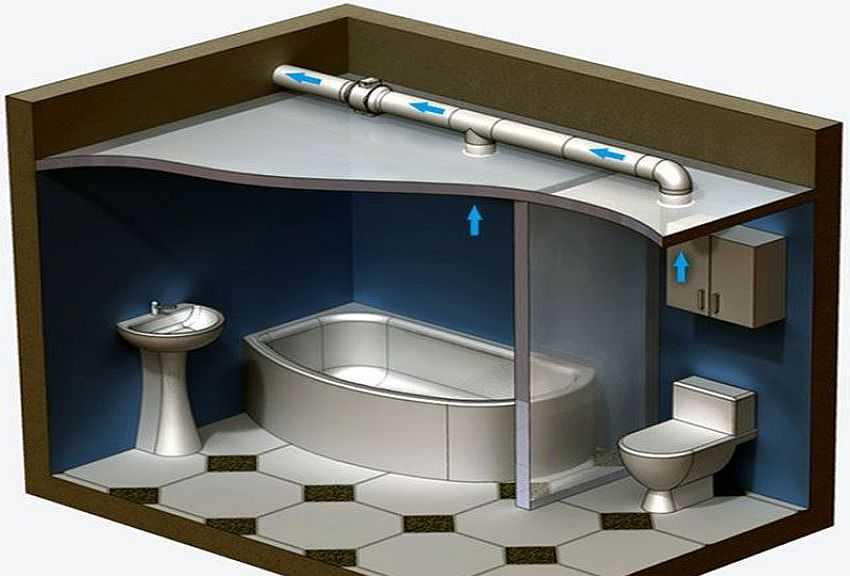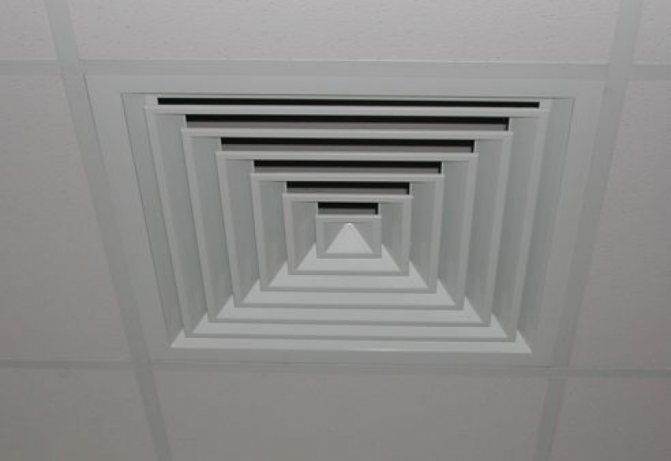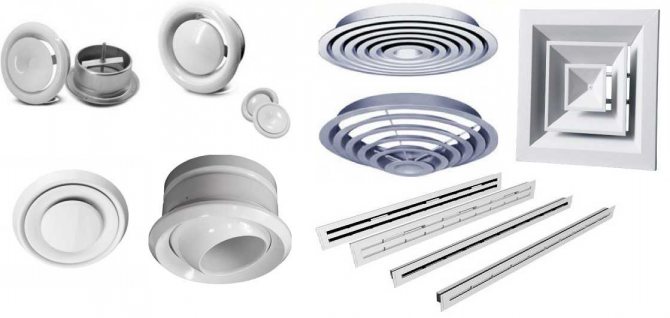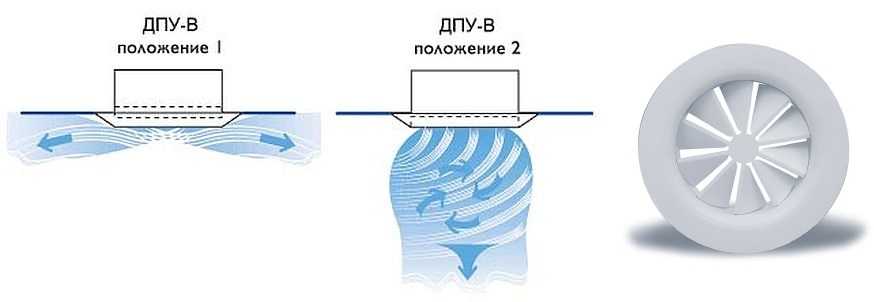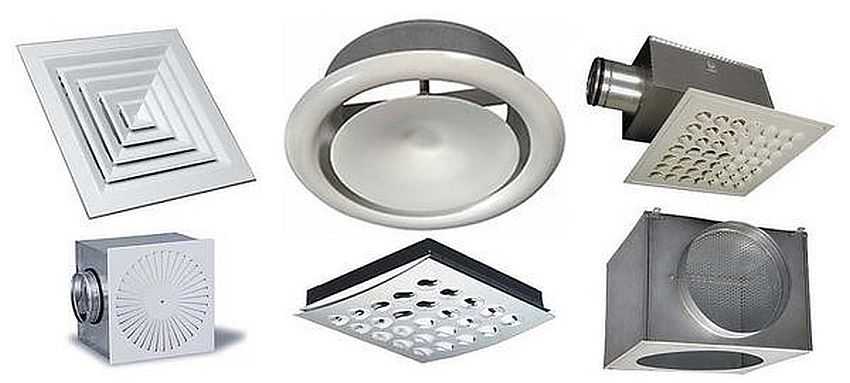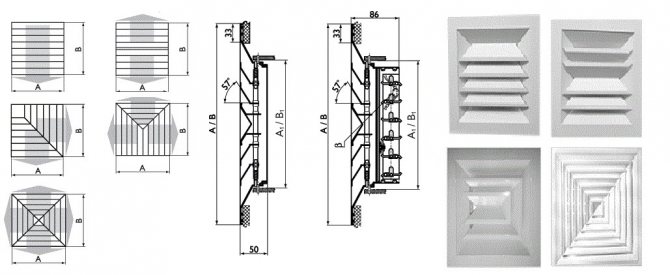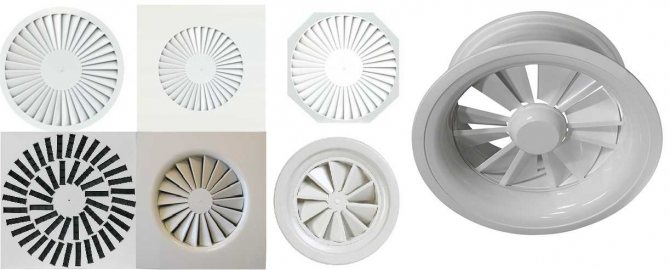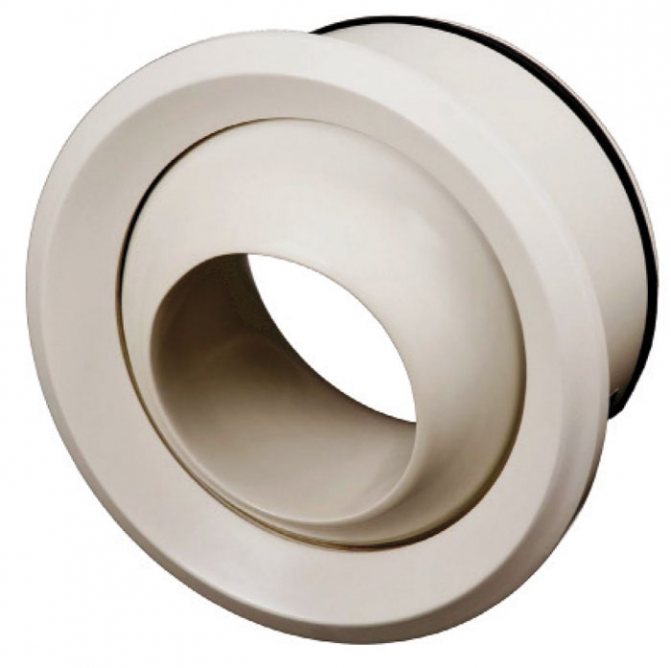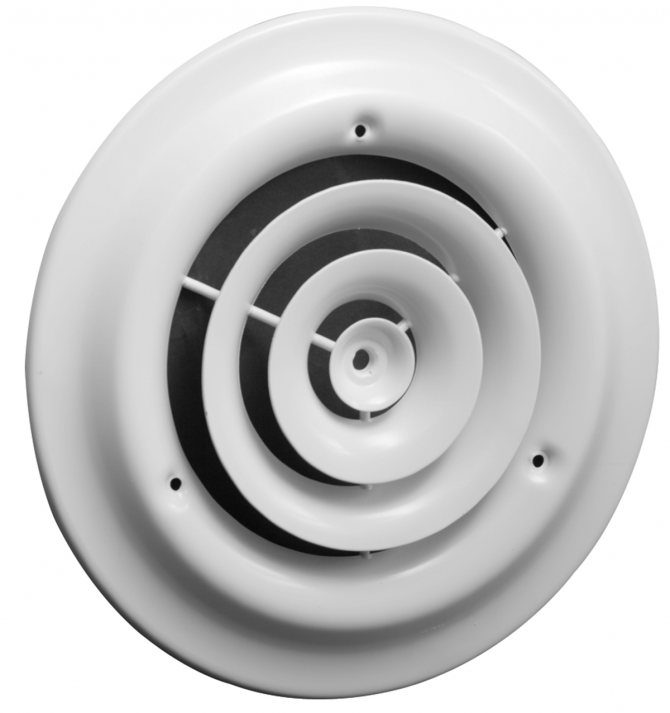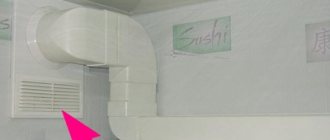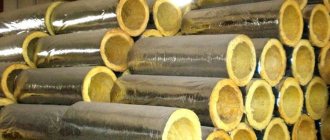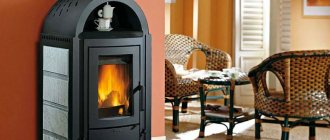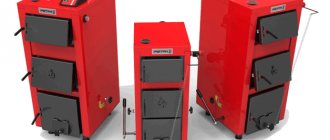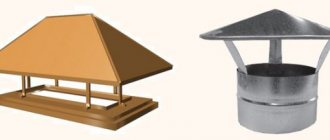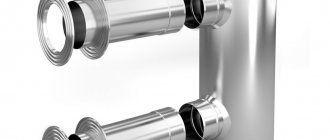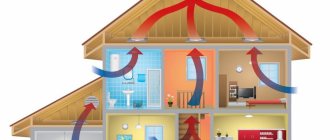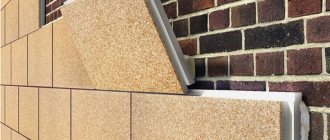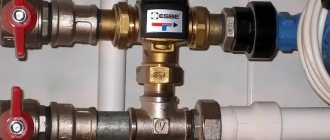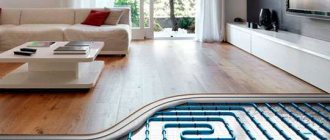For more efficient ventilation in the room, the supply air should not flow in a stream, but should be evenly distributed throughout the entire space of the room. After all, when the air flows in one stream, drafts are created, and they negatively affect people's health. In addition, only a certain part of the room is ventilated with a jet stream of air. Therefore, in order to ventilate the space as efficiently as possible, ventilation diffusers are installed.
A ventilation diffuser - what is it? This is a part of the ventilation system, the purpose of which is to dissipate the input / output air flows over the space of the room.
What is a diffuser?
A diffuser for a ventilation system is a device that has the shape of a grill on the outside. The purpose of this unit is to evenly distribute the incoming and outgoing air masses of the room. There are three types of devices that help diffuse air currents:
- Supply air;
- Exhaust;
- Supply and exhaust (universal);
Diffusers in air conditioning
The purpose of such devices is to evenly distribute air flows from an air conditioner or fan through the air ducts into the room.
Difference between diffuser and ventilation grill
The difference between these devices is only in the design and the intensity of air movement.
Air circulation is taken into account during the calculation and design of air dispersion equipment. Therefore, the arrangement of the blades and partitions of the structure is carried out so that the air flows are most efficiently mixed and evenly distributed over the space of the room.
The diffuser, like the ventilation grilles, contributes to a more intense air flow to the air ducts from the air conditioner, only it does it in a slower and smoother form.
Output
By means of diffusers, it is possible to supply not only the direction and amount of air inflow, but also its outflow. In this case, the correct distribution of air masses occurs throughout the building or a specific room, with minimal loss of heat.
The industry offers models made of different materials and different colors, based on this, when choosing to focus on the characteristics of the devices.
The video in this article will help you find additional data on this topic.
Application and operating principle of a ventilation diffuser
The air distributor can be used for ventilation systems of premises of any purpose - residential buildings, offices, in production. With these tools you can:
Eliminate drafts
Drafts have a negative impact on human health. People with weak immunity are especially susceptible to their influence. They arise as a result of the fact that the streams of air masses form a single jet. This phenomenon is eliminated by the supply air distributor. It promotes divergence and dispersion of the air flow.
Effective ventilation
If there are no units in the ventilation system, with the help of which it is possible to disperse the flows of air masses, only that part of the room in which the air circulates is ventilated, since the air inflow is carried out by the jet method. When ventilated with an air distributor, the jet air flow is uniformly dispersed throughout the entire space of the room. Scattering is mainly carried out by the vortex principle.And ventilation deflectors help to reduce the intensity of air movement through a flexible air duct, or to accelerate the movement of air masses that have entered the outflow system.
Upgrade the exhaust system
Outflow (exhaust) diffusers are used to modernize the exhaust system. They are installed in the ventilation system. Without the presence of an air distributor, the exhaust structure, although it discharges air masses, still forms jets of air streams. This factor negatively affects the atmosphere of the room. Plus, the volume of exhaust air entering the exhaust hole directly depends on changes in the direction of its flow - the larger the change, the lower the throughput. With the help of an air diffuser, this problem can be solved.
Control air flows
Controlling the inflow / outflow of air flows using the diffuser can be carried out with a specially configured control panel. Thus, you can provide additional comfort and prevent the formation of drafts or poor-quality ventilation. Another advantage of this device is sound insulation. With the help of this unit it is possible to eliminate the noise of air flows "walking" in the room.
Classification
Types of ventilation diffusers The ventilation equipment market has a fairly wide range of diffusers. They are divided into several types according to the following characteristics:
By body material
Plastic diffusers for ventilation.
Such devices are made of plastic, resistant to corrosion and decay processes. These air diffusers are very lightweight and come in different shapes and colors.
Metal diffusers for ventilation
These air diffusers are made of aluminum or steel. The advantages of these products are their high strength. They are reliable in operation and have an optimal design. Metal diffusers are considerably heavier than plastic ones. Also, sometimes there may be problems with their installation.
Do not confuse a metal supply air diffuser and a diffuser. Unlike a diffuser, an anemostat can be used to control the volume of circulating air flows (it is not possible in diffusers). Also, the body of the device is made only in a round shape, and the diffuser can have various shapes (both round and rectangular).
The price of the device depends on the material from which the diffuser body is made. Steel fixtures are much more expensive than plastic fixtures.
By form
Circular (swirl) diffusers for ventilation
Such models are divided into:
- Serrated - often mounted in the ceiling, using specially provided clips. These models of air diffusers are equipped with an air mass flow valve.
- Poppet - rarely found in operation, as they do not meet design requirements.
Slot diffusers for ventilation
The boxes for the installation of such devices are very compact and practically invisible on the surface. Due to their shape, they allow you to adjust the direction and angle of air flows.
Mounting of such units does not require much effort. It is produced using brackets.
By appointment
Supply air diffusers
Devices for supply ventilation are designed to scoop and quickly deliver to the room or ventilation unit the flow of fresh air masses from the outside and their uniform distribution.
Exhaust diffusers
They are used for prompt removal of exhaust air from the room outside. At the same time, they contribute to the uniform distribution of air throughout the space of the room and ventilation of its maximum area.
Universal (supply and exhaust) diffusers
Such units are used for inflow - outflow of air into the room, as well as for circulation through the ventilation system.
Nozzle diffusers
Such units are used to create narrow jet streams of air.
At the place of installation
Ceiling diffusers for ventilation
Since the mixing of air flows in the room is carried out at the top (under the ceiling), such air diffusers are very common in operation - 95%. They are used for both supply and exhaust ventilation systems.
Floor diffusers for ventilation
This type of fixture is used for rooms in which supply ventilation is carried out through the basement.
Wall diffusers for ventilation
Such diffusers for ventilation are quite rare in operation, since ventilation grilles are mainly used for walls.
Basically, such units are mounted when it is necessary to install ventilation through a hole in the wall.
Design features
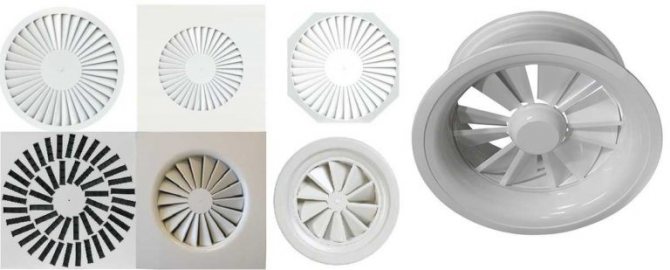
Vortex
The external structure of such air flow distributors consists of partitions and grids, which are located in such a way as to create a swirl of the air masses. This makes it possible to accelerate the movement of air masses and increase the efficiency of such a system.
Often, in vortex diffusers, the placement of the bridges is radial. They are used in rooms with large areas, high ceilings. Also, such units are well suited for rooms in which a quick change of air is required (bathroom, toilet, etc.).
From the inside, such a unit has the shape of a cylinder. The lattice to it can be of various shapes. Moreover, its holes should be located only around the circumference.
The vortex air mass distributors for the supply ventilation system have an additional impeller. It is located behind the bars in the body of the device. This part can be movable and stationary, controlled and not controlled. The controlled impeller can have several operating speeds.
Swirl diffusers can have a static pressure chamber. With its help, too active movement of air currents is eliminated, thus, the appearance of drafts is prevented.
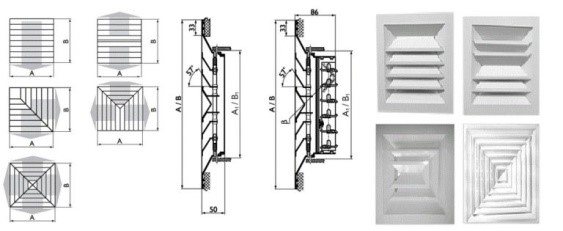

Slotted
The shape of these diffusers resembles slits. Since the distribution of air mass flows directly depends on the position of the partitions, their shape, size and direction, the design of such units is specially developed and calculated.
Such devices are used for rooms in which there is a low or medium performance of the ventilation system.
Slotted devices for diffusing air flows can be adjustable and change the direction of the supplied air masses (similar to the blinds of air conditioners). Such diffusers may have a static pressure chamber.
The design of slot diffusers and grilles for them can be of various shapes.


Adjustable
These ventilation diffusers are equipped with adjustable sliding plates. This is a regulating element of the structure, due to which the throughput of the device is controlled.
Such devices are called anemostats. The flow of air masses is regulated due to the movements of the central part of the unit clockwise or counterclockwise. The lamellas in the device are movably fixed. This allows them to change position and open or close the gap to generate air masses.
There are anemostats equipped with presence sensors and analyzers of the composition of air masses. Such units are connected to the room climate control system. Such a system works in automatic mode. Its task is to maintain a given indoor climate.
Stream distribution
Each manufacturer produces devices of different shapes and designs of the air diffuser. There is no strict classification of diffusers according to the air flow characteristics, but they can be divided into the following types:
- Slotted - the flow distribution passes through several slots, as in gratings.
- Jet - air is supplied with one or more jets of high speed and over long distances.
- Perforated - a large number of small holes are arranged in their surface through which air enters the room or is removed from it evenly and at a low speed.
- Vortex - the slots in them are located in such a way that the air enters the room, swirling in the form of a funnel.
- Linear - elongated with a small number of slots.
We recommend that you familiarize yourself with: How to choose and install a ventilation grill for a window sill
There are other types of narrow applications or for specific systems.
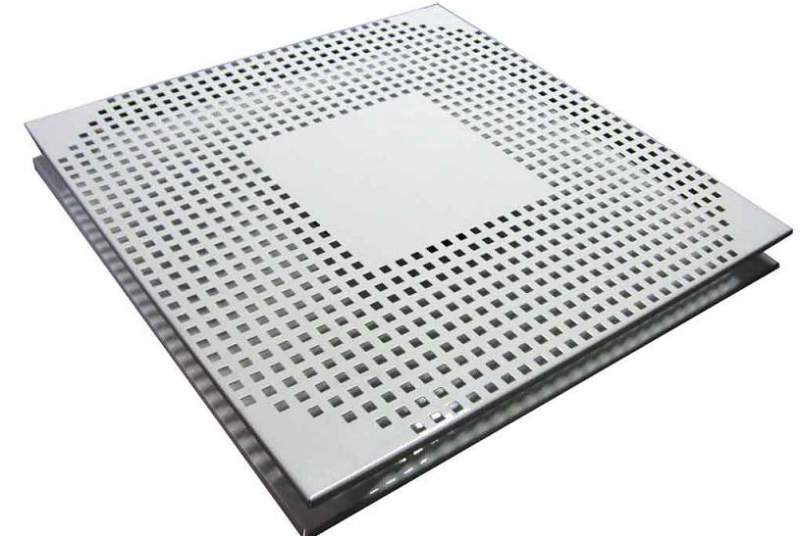

Perforated diffuser
Diy diffuser installation
So that during the installation of the equipment there are no problems, you need to prepare the hole for installation in advance. The opening must match the size and shape of the fixture.
The accessory components for mounting the diffuser are always supplied with special fixing clips. With their help, the unit can be installed both in a flexible duct and in a rigid duct.
Installation features:
Installing a diffuser in a rigid duct
- Before purchasing an air diffuser, you need to accurately measure the size and shape of the hole for the device. The unit must be selected in strict accordance with these parameters.
- The installation of the device consists in smoothly moving the device into a previously prepared hole, until a characteristic sound appears - a click. Installation of the device must be done carefully in order to avoid damage to the case (if pressed firmly, the case may burst).
- Then you need to carefully inspect the surface and make sure that there are no irregularities or protrusions between the opening and the unit.
- If installation defects are found, you need to check all the latches and make sure that they worked. Otherwise, you need to press on the necessary part of the device until it is fixed.
Installing the diffuser in the soft channel
- First, you need to get the sleeve out of the hole in the wall and attach a device to diffuse air currents to it.
- Then, the sleeve is placed in the channel, followed by the unit.
- When the system begins to come into contact with the wall surface, you need to fix the device. To do this, you need to slowly, without making any special efforts, press on the diffuser until the fastening mechanisms work.
- Make sure that there are no installation defects (protrusions, irregularities above the wall surface).
Installing the diffuser in ductless exhaust ventilation (hole in the wall)
- Initially, you need to prepare an opening in which the unit will be installed to diffuse air flows. For these purposes, it is recommended to use a pipe, the parameters of which will correspond to the size of the diffuser.
- The opening itself in the wall can be made from a pipe. To do this, you need to measure the length of the hole from the outer wall to the inner one, then adjust the pipe to these dimensions.
- Insert the fitted pipe into the hole and install the device in it according to the principle described above.
- Fastening the pipe to the hole can be done with mounting foam.
If the diffuser accessories do not include clips for fastening, they can be replaced with glue, anchors, sealant or self-tapping screws.
Diffuser Installation Recommendations
- The fastening element should be selected depending on the shape of the membrane and the construction of the ceiling, walls or floor.
- It is necessary to install this element at the construction stage of the building structure, in accordance with the project plan.
- Mark the placement of the fasteners on the surface to be installed.
- Mark the place where the ceiling and its frame are attached (when cutting into drywall, or when installing into a stretch ceiling).
- Make a marking of the dimensions of the structure on the wall (to determine the occupied space).
- With the help of a grinder, make a depression in the wall (the gap should be about 5 mm).
- Next, you need to insert the housing of the air distributor and put a mark on the wall to indicate the attachment points.
- Using a hammer drill, make holes of the required diameter.
- Seal the joints with the wall and fasten the element.
- Attach the nozzle using bolts and self-tapping screws.
- The front panel is dismantled and the air distribution parameters are set.
- After finishing the membrane installation, the setup stage is performed It includes the connection and connection of the measuring nipple and the micronanometer.
- The device should be washed as soon as it gets dirty, using warm water and detergent.
Thus, the process of using air diffusers in ventilation design is not a very complicated operation. Installation, dismantling and maintenance of the air flow distributor can be done with your own hands using special tools and at no special cost. Perhaps the most important point is the calculation of maintenance, the efficiency of the distributor and oxygen circulation, a competent and neat placement on the surface of the wall or ceiling for harmonious use in the interior.

